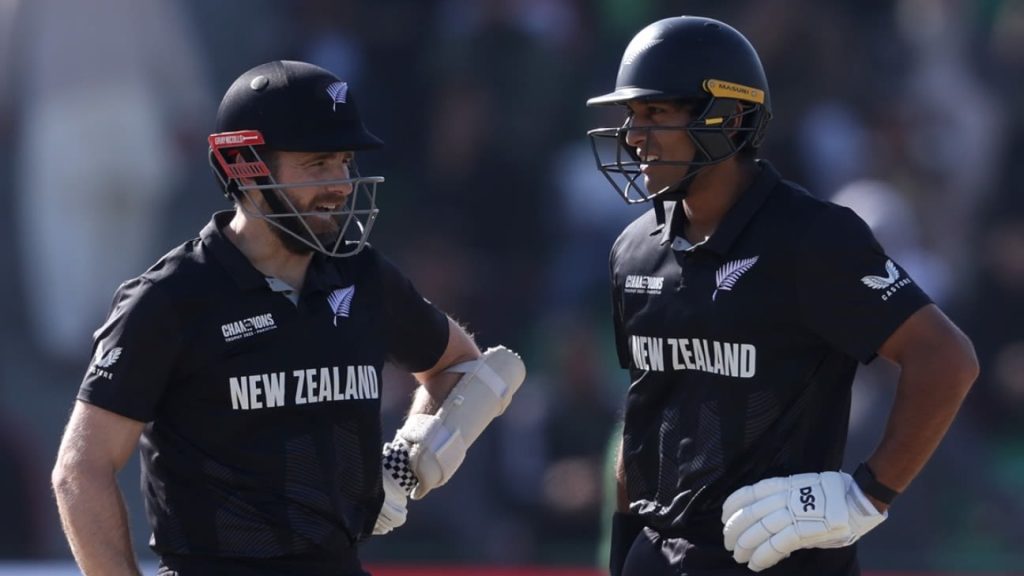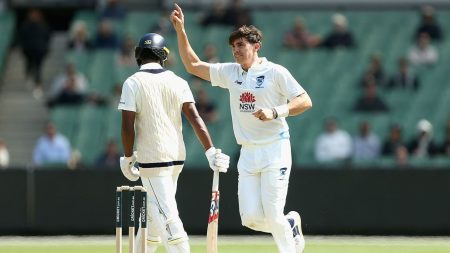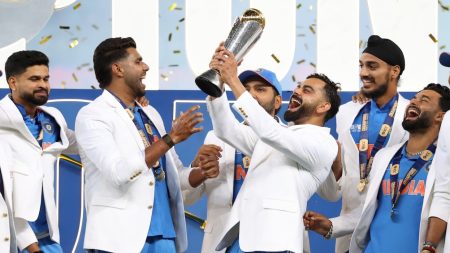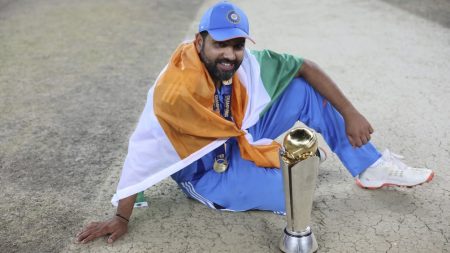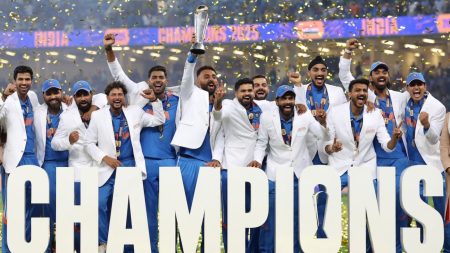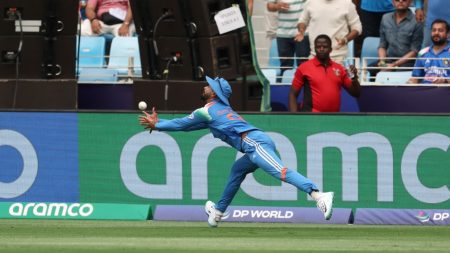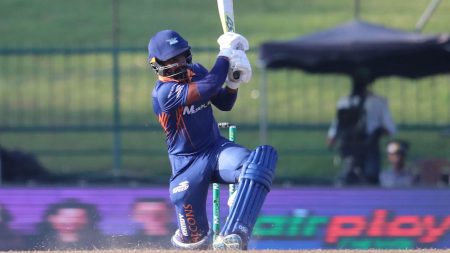New Zealand’s Dominant Performance Earns Them a Spot in the Champions Trophy Final
In a thrilling semi-final encounter at the ICC Champions Trophy in Lahore, New Zealand delivered a commanding performance, posting a mammoth total of 362 for 6 and securing a 50-run victory over South Africa. This triumph has thrust them into their seventh ICC final, and their fourth in the One Day International (ODI) format, setting the stage for a showdown against India in Dubai on Sunday. The match was a showcase of New Zealand’s batting prowess and their ability to defend a challenging total with precision and determination.
The Unbreakable Partnership of Ravindra and Williamson
New Zealand’s success was largely due to the unbreakable partnership between Rachin Ravindra and Kane Williamson, who together scored 164 runs, the highest stand for the second wicket in the Champions Trophy. Ravindra, known for his aggressive style, scored his fifth ODI century, all of which have come in ICC events. His innings was a display of courage and consistency, maintaining a strike rate of over 100 throughout. On the other hand, Williamson, the epitome of calm and composure, played a more measured game. He took 61 balls to reach his half-century but then accelerated, bringing up his century in just 30 more deliveries. Their contrasting styles kept South Africa guessing and allowed New Zealand to build a solid foundation for their innings.
Strategic Batting and Bowling Decisions Pay Off
The decision to bat first by New Zealand captain Mitchell Santner proved to be a masterstroke. Winning the toss, Santner hoped the early breeze would help negate the dew that often complicates evening conditions. This strategy paid off as New Zealand’s batsmen found the perfect rhythm on a relatively flat pitch. Will Young’s early dismissal did little to deter the Kiwis, and Ravindra continued to dictate terms with his aggressive approach. He pulled, drove, and cut with precision, taming Marco Jansen’s short balls and hitting crucial boundaries. Williamson, after a sedate start, found his flow, using a variety of innovative shots to keep the scoreboard ticking. Their partnership was the cornerstone of New Zealand’s innings, and it set the stage for the explosive finish provided by Daryl Mitchell and Glenn Phillips.
South Africa’s Missteps in the Field and with the Ball
South Africa’s defeat can be attributed as much to New Zealand’s brilliance as to their own shortcomings, particularly in the field and with their bowling strategy. The Proteas’ bowlers, usually reliable, were off their game. Lungi Ngidi, the standout performer for South Africa, took early wickets but could not prevent the onslaught. Jansen and Keshav Maharaj struggled to find their rhythm, going wicketless despite decent efforts. Ngidi’s slower balls were the most effective, but the lack of early breakthroughs and dropped catches cost South Africa dearly. Williamson’s dismissal, thanks to a poor catch by Heinrich Klaasen, could have shifted the momentum, but it was too little, too late. New Zealand’s late innings carnage, which saw them score 83 runs in the last six overs, further compounded South Africa’s woes.
Bavuma and van der Dussen’s Heroic Effort Falls Short
South Africa’s chase began on a promising note, with Temba Bavuma and Rassie van der Dussen forming a dangerous partnership. Bavuma, who started slowly, gradually found his form, hitting some majestic shots over mid-off and behind square. Van der Dussen was equally impressive, showing his in-form status with a well-crafted fifty. Their stand grew to 105 runs, and South Africa seemed to be in a good position. However, Santner’s decisive spell changed the course of the game. He dismissed Bavuma, who was trying to hit over cover, and then van der Dussen, who was bowled by a quicker delivery. Klaasen’s dismissal further dented South Africa’s hopes, and they found themselves needing 170 runs from the last 15 overs with just five wickets in hand. ESPNcricinfo’s win predictor gave them less than a 0.5% chance of winning, and despite Miller’s heroic effort, the gap was insurmountable.
David Miller’s Bittersweet Century
David Miller’s century, his seventh in ODIs, was a highlight of South Africa’s innings, but it could not salvage the match. Batted down the order, Miller showed his class, farming the strike and facing all 18 remaining balls to reach a 67-ball century off the last ball of the match. His cradle celebration, likely dedicated to his one-month-old son Benji, was a touching moment but also a poignant reminder of the Proteas’ unfulfilled dreams. South Africa’s search for a second major title, following their victory in the inaugural Champions Trophy in 1998, continues. For Miller, much like his century in the 2023 ODI World Cup semi-final, this knock might feel "a bit hollow," a testament to the team’s collective failure to capitalize on individual brilliance.
New Zealand’s Path to the Final and Beyond
For New Zealand, this victory has come as a significant confidence boost. They last won an ICC ODI trophy in the year 2000, and the opportunity to add another title to their trophy cabinet is now within reach. The final against India will be a Crucial test, but New Zealand’s form and composure, as demonstrated in this semi-final, suggest they are well-prepared for the challenge. Their ability to adapt to changing conditions and their balanced approach, combining aggressive batting with disciplined bowling, have been key factors in their success. As they head to Dubai, the Kiwis will be looking to build on this momentum and bring home their fourth ODI title. The dream is alive, and New Zealand will be eager to make it a reality.

